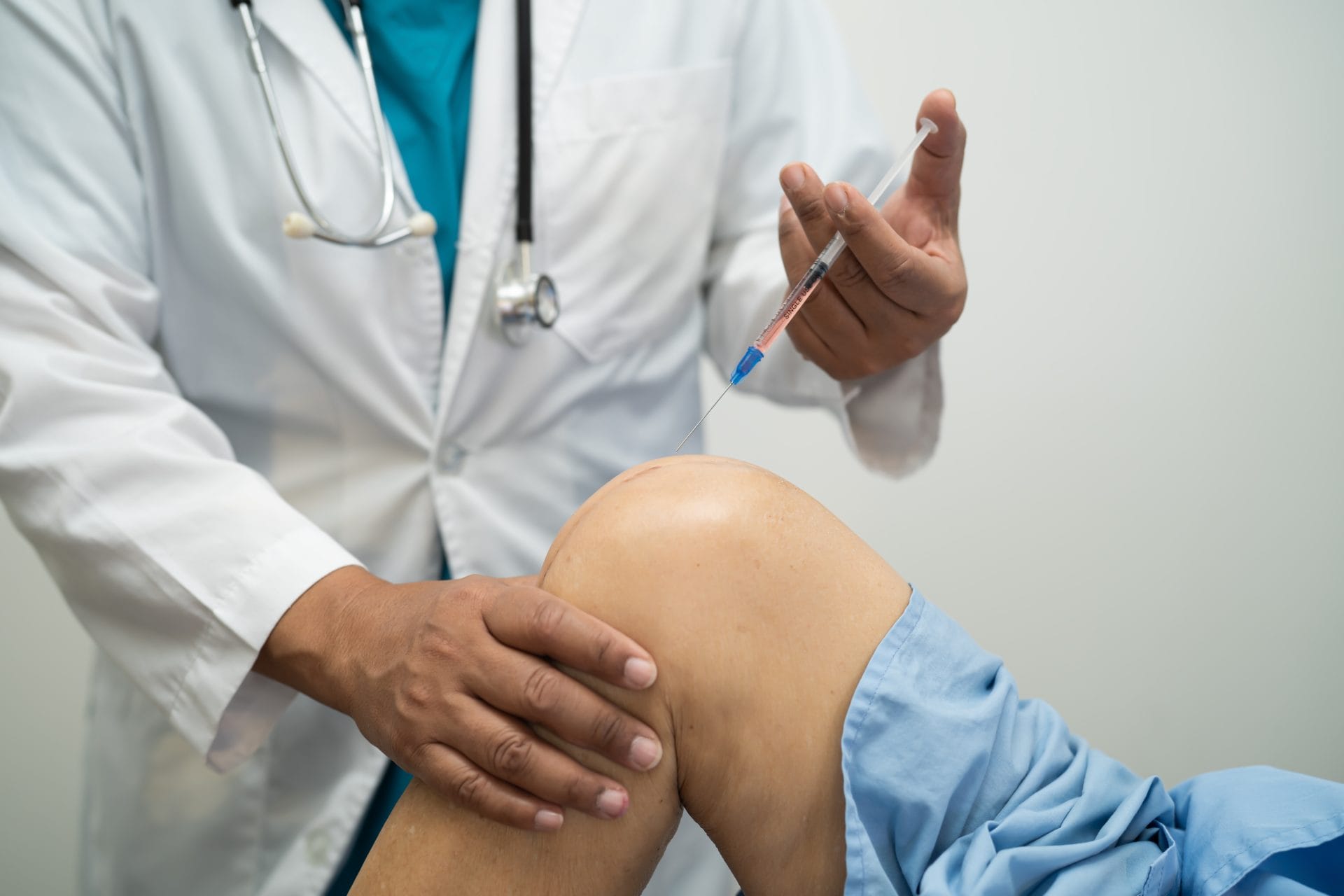The human body is a remarkable machine with the ability to heal and repair itself from various forms of damage. However, there are limits to this self-healing capacity, especially when it comes to the regeneration of joint tissues. Throughout human history, joint diseases have posed significant health challenges, often leading to chronic pain and decreased mobility.
This article explores an exciting frontier in medical science: the regeneration of joints. This will examine the basics of joint structure and function, the need for joint regeneration, traditional and new methods, and the future implications for health and mobility.
Understanding Joints And Their Function
Joints, the connecting structures between bones, are crucial for all bodily movements. Each joint, comprising cartilage, synovial fluid, ligaments, and a synovial membrane, functions as a sophisticated system allowing for smooth, pain-free movement.
The cartilage, a smooth tissue at the end of bones, absorbs shocks and prevents the bones from rubbing against each other. The synovial fluid, produced by the synovial membrane, lubricates the joint and nourishes the cartilage. Ligaments, bands of tough, elastic connective tissue, hold the bones together and keep the joint stable.
Importantly, each of these components plays a crucial role in the overall function of the joint. Any damage or degeneration to these components, whether it be the wearing down of cartilage in osteoarthritis or inflammation of the synovial membrane in rheumatoid arthritis, can lead to joint pain and loss of function.
Why Joint Regeneration?
Over time, due to factors such as aging, injuries, or diseases like osteoarthritis and rheumatoid arthritis, the components of the joints can degenerate. This degeneration results in painful conditions and significantly impacts an individual’s quality of life.
Currently, treatments for severe joint conditions are often temporary and may not restore the full function of the joint. Non-steroidal anti-inflammatory drugs (NSAIDs), physical therapy, and corticosteroids can alleviate symptoms but do not address the underlying joint damage. In severe cases, joint replacement surgery may only be a viable option.
The limitations of current treatments underline the critical need for a more permanent and less invasive solution to joint diseases, like the ones from this website https://rmspineandsport.com/regenexx/. That’s where the concept of joint regeneration comes into play. The idea is to harness the body’s natural healing processes to repair damaged joint tissues, potentially restoring full function and eliminating pain.
Traditional Methods For Joint Regeneration
Traditional methods for joint regeneration encompass several therapeutic strategies, ranging from the use of drugs to surgeries, designed to slow down the process of joint degeneration and, in some cases, encourage the body’s own healing mechanisms. These methods, while not providing complete regeneration, have served as the cornerstone of treatment in orthopedics for many years.
Pharmacological Interventions
The most common first line of treatment for joint degeneration involves pharmacological interventions. Non-Steroidal Anti-Inflammatory Drugs (NSAIDs), such as ibuprofen and aspirin, are used to manage inflammation and pain associated with joint diseases. Corticosteroids, either administered orally or injected directly into the joint, also help reduce inflammation and can provide temporary relief.
Another type of medication commonly used is disease-modifying antirheumatic drugs (DMARDs). As the name suggests, these drugs aim to slow down the disease progression rather than merely address the symptoms. Examples of DMARDs include methotrexate and hydroxychloroquine.
In recent years, biological agents, such as tumor necrosis factor (TNF) inhibitors, have been developed. These drugs work by blocking specific parts of the immune system involved in inflammation, a common feature in joint diseases.
While these pharmacological treatments may alleviate symptoms and, in some cases, slow down the disease progression, they cannot reverse joint damage or provide complete regeneration.
Physical Therapy
Physical therapy is another standard treatment for joint degeneration. It involves a range of interventions, such as targeted exercises, massages, and hot or cold treatments, aimed at reducing pain, improving mobility, and strengthening the muscles around the affected joints. This approach can improve joint function and slow the progression of joint diseases.
Surgical Interventions
When conservative treatments like medications and physical therapy are ineffective or when joint damage is severe, surgical interventions may be necessary.
Arthroscopy is a minimally invasive procedure that allows surgeons to inspect, diagnose, and treat problems inside a joint. The procedure involves making small incisions around the joint and inserting a thin tube attached to a fiber-optic video camera. In the context of joint regeneration, arthroscopy can be used to remove damaged tissue or repair torn ligaments.
Another surgical method is osteotomy, a procedure in which the surgeon cuts and repositions the bone to relieve stress on the joint. This procedure can reduce pain and improve function, particularly in younger patients who may wish to delay joint replacement surgery.
Joint replacement surgery, or arthroplasty, is the most invasive surgical option and is usually considered when other treatments have failed. In this procedure, the damaged joint is removed and replaced with a prosthesis made of plastic, metal, or ceramic. Joint replacements can significantly improve quality of life, but they also come with risks, such as infection and prosthesis failure, and they may eventually need to be replaced.
Autologous Chondrocyte Implantation (ACI)
While not as widely used as the treatments mentioned above, Autologous Chondrocyte Implantation (ACI) represents a more regenerative approach to joint repair. This technique involves harvesting healthy cartilage cells (chondrocytes) from the patient, culturing these cells in a laboratory, and then re-implanting them into the damaged area of the joint to stimulate new cartilage growth.
While ACI has shown promise, particularly for treating localized cartilage defects, its applications are somewhat limited. The procedure is complex and costly, and it may not be suitable for patients with advanced joint degeneration or multiple areas of cartilage damage.
Traditional methods for joint regeneration have primarily aimed to slow disease progression, relieve symptoms, and, in severe cases, replace the damaged joint. However, these methods are often associated with significant drawbacks, such as side effects from medications, the invasive nature of the surgery, and the lack of complete joint regeneration. These limitations highlight the urgent need for more effective regenerative treatments, as currently being explored in the emerging field of regenerative medicine.
Advances In Joint Regeneration
As explained, joint degeneration and related diseases have historically been challenging to treat due to the body’s limited ability to restore damaged cartilage and other joint tissues. However, with advancements in medical science, a variety of novel techniques are currently under investigation. These involve cutting-edge fields such as stem cell therapy, tissue engineering, and gene therapy.
Stem Cell Therapy
Stem cells have the unique ability to self-renew and differentiate into various cell types, making them a potent tool for tissue regeneration. In the context of joint repair, researchers are studying the use of mesenchymal stem cells (MSCs). MSCs, which can differentiate into bone, cartilage, and fat cells, can be derived from several sources, including bone marrow, adipose tissue, and umbilical cord blood.
Early clinical trials have shown promising results. In osteoarthritis patients, for example, injecting MSCs into the affected joint led to improved joint function and reduced pain. While these results are encouraging, more extensive studies are needed to confirm safety and effectiveness.
Tissue Engineering
Tissue engineering combines principles of biology, material science, and engineering to develop biological substitutes that can repair or replace damaged tissues. In joint regeneration, tissue engineering often involves the use of scaffolds—structures made from biodegradable materials that provide a platform for new tissue growth.
For instance, researchers have successfully created cartilage tissue by implanting chondrocytes (cartilage cells) onto a 3D scaffold. As the chondrocytes proliferate and secrete extracellular matrix, they form new cartilage tissue. Again, while promising, this technique is still in the experimental stage and requires further validation.
Gene Therapy
Gene therapy, an experimental technique that uses genes to treat or prevent diseases, offers another avenue for joint regeneration. This technique could potentially help address conditions like osteoarthritis by delivering genes that stimulate the production of cartilage or decrease inflammation. While in the early stages of development, the potential of gene therapy for joint regeneration is vast and could offer a transformative approach to treating joint diseases.
Future Implications And Challenges
The potential benefits of successful joint regeneration techniques are massive. If these strategies prove safe and effective, they could revolutionize treatment for millions of people worldwide who suffer from joint diseases. Besides alleviating pain, these therapies could restore full mobility to patients and significantly improve their quality of life.
However, it’s essential to note that these therapies are still in the early stages of research and development. Their safety and long-term effectiveness are yet to be conclusively proven. It’s also necessary to address potential ethical and regulatory issues surrounding the use of stem cells and gene therapy.
Additionally, the cost of these treatments could be a significant hurdle. These advanced therapies are likely to be expensive, at least initially. Ensuring access and affordability will be key challenges to address as these therapies move closer to clinical use.
Final Thoughts
The path to effective joint regeneration may be complex and fraught with challenges, but the potential rewards are immense. As you continue to expand your understanding of the body’s healing processes, you’ll move ever closer to a future where a diagnosis of joint disease does not mean a life sentence of pain and limited mobility. Instead, it could become a condition that can be effectively and permanently treated, offering hope to millions worldwide. This promising field of regenerative medicine is truly standing on the brink of a healthcare revolution.








